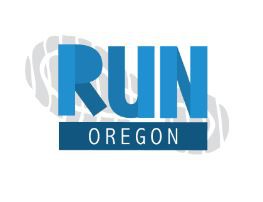
The following has been submitted by Run Oregon reader, Laura Owen.
As with so many other races this year, The Portland Marathon has succumbed to the pandemic and been cancelled. However, the organizers have put an interesting and unique opportunity to run a chip-timed, sanctioned course in its place. OYO Portland offers marathon, half marathon, 10k and 5k options, guided by a phone app, and chip-timed with a true starting line pad. The race had me super excited and I registered right away. This week I got a sneak peak as I had the opportunity to test their software on the 10k course. Here’s what I thought:
How does it work? Runners download the OYO app and submit the required ID check. You’ll be mailed a bib with chip, and at the start line your chip is identified as you approach. Simply open the app and follow the directions for starting (and DON’T step over the mat!) No troubles except that you will need to make sure you’ve updated the app – if you downloaded it immediately out of race excitement like I did – to make sure you have the latest course instructions. The course rules are just like a “real” race – no stopping, second chances, pushing pause on your watch, etc. Once you start running you’re all-in, and deviating from or cheating the course will earn you a DQ. The app is pretty slick and includes a voice guide through the course, which provides turn-by-turn directions, the locations of water fountains and restrooms, how far it is til the next one, and the occasional robotic cheer! I almost laughed as I finished the race and heard a lovely monotone “You got this!” A word of warning – there are also updates on your pace, splits, and your current projected finish time, so if you don’t wish to hear this you will have to mute your phone and forego the course directions.

The course: Portland’s water front loop! I would consider the 10k course a flat but not necessarily fast course, due to the many turns and potential bike/pedestrian traffic. Waterfront regulars should have no trouble with the course, but be aware that right now there is a detour before the Steel Bridge due to construction, which had not been finalized on the app when I tested it. In terms of terrain and vehicular traffic, the course is safe and consists of pedestrian/bike paths only. There is small gravel section, otherwise it’s asphalt and concrete.
The good: We’ve been race-deprived and this provides the opportunity to race with a chip, a start/finish pad, and that “once you start you can’t turn back” element of racing. The race can be run anytime, day or night, rain or shine, starting Sept. 1. The app is pretty slick in terms of getting the directions down (except for the detour) and letting you know an “aid station” is coming up. The only climbs are the two Tilikum crossings, but the upside is a fast downhill finish! True to the race organizer’s claim, I found no points where I was required to stop for or even worry about vehicular traffic (you’ll need to watch for cyclists.)

The (not so) bad: In all honesty, I don’t see runners who aren’t familiar with the course being able to execute it at race pace while trying to listen to their phones, and the race organizers have not made turn-by-turn directions or the app’s voice instructions available pre-race (yet). I found the directions to come a little slowly in the first half of the course, which might make it hard to run the tangents or approach the turns at full speed. So if you want to truly race this and you move at a quick pace, I recommend studying the course from their maps and giving it a go before the actual day. I tested the software at pedestrian pace with a couple of friends and there was a lot of “wait, did the phone just say something?” and “did you hear that, which way were we supposed to go?” and “stop talking! I can’t hear the phone”. In conversation with the organizers, I found they are assuming runners will race with Bluetooth headphones.
The ugly: Portland has changed a lot lately, and you will get an up-close-and-personal view of it on this course. You’ll run through camps, there will be garbage in some parts, and you may not want to run it alone early morning or in the evening. I was accosted once near the start line, but did not have any trouble on the course itself. Although I began at 6 am, the course was fairly peopled by the time I finished before 7.
All things considered, the race organizers have done a great job finding a meaningful and unique way to take racing virtual while keeping it real. Is this a PR course? Perhaps, if you practice the route ahead of time and get familiar with it. Is it a great way to fill the race void with a well-organized event? Absolutely!



